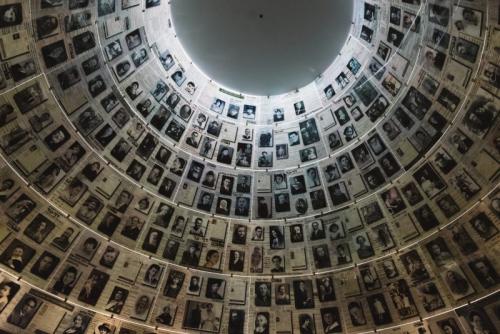Call for Papers: Workshop 'Marking of Jews During the Holocaust'

Call for Papers
Marking of Jews During the Holocaust
Yad Vashem Summer workshop for Scholars 8-11 July 2019 in in Jerusalem. Application deadline 15 April 2019.
Marking Jews was not an invention of Nazi Germany. The earliest cases occurred in the 8th century, in the Muslim world, and resulted from the intention to reinforce their protected status in society. The Catholic Church and Catholic European rulers later adapted this practice not as a means of protection but as a means of segregation and of visualizing the Jews' (and Muslims) inferior status within Christian society. The Fourth Lateran Council (1215) decreed "that such Jews and Saracens [=Muslims] of both sexes in every Christian province and at all times shall be marked off in the eyes of the public from other peoples through the character of their dress." Modes of marking varied, but for many centuries, before this obligation was abolished, Jews in Europe were visually identified marks or clothes.
The marking measure was re-introduced and harshly implemented in Nazi Germany - first on various categories of concentration camps inmates, later on Jews in the occupied territories and in Germany proper, and satellite countries of Germany followed suit. The Judenstern (Jewish Star - Star of David) became the major mark of identification of Jews though not the only form of marking; also, this measure was not implemented everywhere and at the same moment. In concentrations and forced labor camps many marking methods were used (bands on sleeves, clothing, badges, numbering etc.), suggesting a lack of central general instructions. This year’s Yad Vashem summer workshop deals with the marking of Jews during the Holocaust.
This workshop will take place between 8-11 July 2019 and will be dedicated to the marking of Jews in various countries, in ghettos and camps, within the larger context of marking persecuted groups. We call upon scholars from various disciplines to propose topics for papers that will relate to the following aspects (other relevant topics will also be considered):
- What were the different kinds of markings, badges and prisoner uniforms – in different countries, ghettos and camps? Where and by whom were they manufactured?
- How were decisions taken and by whom – was the initiative of German occupying authorities, local German or local non-German authorities? What were the declared criteria, goals and means of implementation in each place?
- How was the prisoner numbering planned and implemented in different camps? In which context should we understand the creation of unofficial "marking objects" (such as creating bracelets with the inmate's number etc.) by the prisoners, in conjunction with the official marking?
- How did Jews and non-Jews experience and respond to this persecutory order? What was the psychological and social impact of the marking measure?
- What place does the marking have in survivors' memoirs, remembrance and in public and private life after the war? How are the Nazi-era markings presented in post-war visual representations (in films, art and museums)?
- What are the challenges encountered by museum curators regarding the marking artifacts and their display?
Participants are encouraged to approach these issues via real-time official documents, diaries, survivor and perpetrator testimonies, judicial materials, and photography.
Applicants are requested to specify in their applications primary sources which will be utilized by them. All application materials must be submitted in either Hebrew or English and received by the Institute no later than 15 April 2019. Incomplete applications will not be considered after this date.
****Late applications will not be accepted.****
An application consists of:
1) A completed application form
2) A one-page abstract (300 words) in English
3) A preliminary list of relevant documentation that would be presented
4) A short academic biography (15-20 lines)
Send all application materials to the International Institute for Holocaust Research. Email: research.applicationas@yadvashem.org.il. Tel: 972-2-6443-480 / Fax: 972-2-6443-479
About Yad Vashem and the International Institute for Holocaust Research
Yad Vashem, the Holocaust Martyrs’ and Heroes’ Remembrance Authority, is located on the Mount of Remembrance in Jerusalem, Israel, and was established in 1953 by an act of the Knesset – the Israeli parliament – in order to enshrine and preserve the memory of the six million Jews annihilated by Nazi Germany, and the thousands of flourishing Jewish communities destroyed in the process. Yad Vashem is the monument of a nation’s grief. Apart from its role as a commemorative institution, Yad Vashem is recognized as an academic center that specializes in Holocaust research and education.
The International Institute for Holocaust Research – Yad Vashem was formally established in the 1993. It inherited a research and publication legacy dating back to the establishment of Yad Vashem. The Institute is active in the development and coordination of International research; the planning and undertaking of scholarly projects; the organization of symposia, conferences, and seminars; the fostering of cooperative projects among research institutions; financial and academic support for scholars and students of the Shoah; offering MA, PhD and postdoctoral fellowships, and publishing academic research, documentation, conference anthologies, diaries, memoirs, and albums about the Shoah.